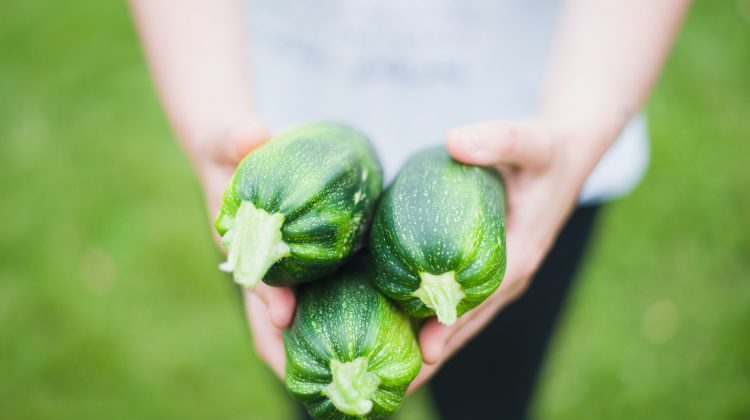
3242 words
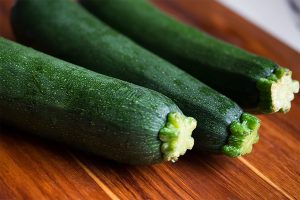
In today’s post, we’re excited to dive deep into the world of zucchinis – one of the most versatile and delicious vegetables out there. Whether grilled, roasted, sautéed, or baked into a cake, zucchinis are an excellent source of vitamins, fiber, and antioxidants. However, as with any perishable food item, zucchinis can spoil if not handled and stored properly. So it is highly important for everyone to be able to tell if Zucchini is bad.
Consuming spoiled zucchinis can lead to food poisoning, which can cause severe health problems, especially for young children, pregnant women, and the elderly. So, it’s crucial to know how to identify bad zucchinis before they end up on your plate.
In this post, we’ll discuss the different ways you can tell if your zucchinis are still fresh or if they’ve gone bad. We’ll cover the telltale signs of spoiled zucchinis, such as changes in physical appearance, smell, touch, and taste.
By understanding these indicators, you’ll be able to avoid eating zucchinis that have gone bad and keep yourself and your loved ones safe from foodborne illnesses.
We’ll also dive into the importance of properly storing zucchinis. Zucchinis have a relatively short shelf life, and improper storage can cause them to spoil quickly. Therefore, it’s crucial to store zucchinis correctly to prolong their freshness and quality.
We’ll provide you with some essential tips for properly storing zucchinis to ensure that they stay fresh and safe to eat for as long as possible.
By the end of this post, you’ll have a better understanding of how to identify bad zucchinis and how to store them properly to keep them fresh and tasty. So, if you’re a fan of this green and versatile vegetable, read on to learn how to make the most of your zucchinis and avoid any potential health hazards associated with consuming spoiled produce.
Signs of bad Zucchini
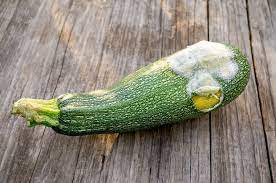
1. Texture
There are several signs that can indicate if your zucchini has gone bad. One of the most obvious ways to tell if zucchini is no longer good is to examine its physical appearance. Spoiled zucchinis may exhibit signs of mold or fungus growth, and their texture may change, becoming mushy or slimy. Also, If you notice discoloration or soft spots on the skin, this is a good indication that the food is no longer good to eat..
2. Smell
The smell of zucchinis can also provide clues as to whether or not they’re still fresh. Anyone that has a rotten or musty odor is a clear indication that it has spoiled and needs to be thrown away without delay. It’s also important to note that while zucchinis have a subtle scent, they should not emit a strong, pungent odor.
3. Touch
Touch can be another indicator of a bad zucchini. If it feels soft or squishy to the touch, it’s a sign that the zucchini has passed its prime and should not be consumed. A fresh zucchini, on the other hand, should be firm to the touch with a smooth texture.
4. Taste
Lastly, the taste of zucchinis can provide insight into their freshness. Spoiled zucchinis may taste bitter, sour, or have an overall unpleasant flavor. If the zucchini tastes off or has a strange aftertaste, it’s best to err on the side of caution and not consume it.
In addition to these signs, it’s important to keep in mind that zucchinis have a relatively short shelf life and should be consumed within a few days of purchase. Proper storage techniques can help prolong the lifespan of zucchinis.
By knowing the signs of a bad zucchini and proper storage techniques, you can ensure that your zucchinis are fresh and safe to consume.
How to properly store Zucchini

Proper storage is key to ensuring the freshness and quality of zucchinis. Zucchinis are sensitive to moisture and can easily spoil if they are not stored correctly. The following are some tips for properly storing zucchinis:
Store zucchinis in the refrigerator: Zucchinis should be stored in the refrigerator to keep them fresh. They should be placed in the crisper drawer, which is the coldest part of the refrigerator. The temperature in the crisper drawer should be between 32°F and 40°F, which is the ideal temperature range for zucchinis.
Store zucchinis in a plastic bag: Zucchinis should be stored in a plastic bag to prevent moisture from building up on the surface of the vegetable. Moisture can cause zucchinis to spoil quickly, so it’s important to keep them as dry as possible.
Do not wash zucchinis before storing: Zucchinis should not be washed before storing. Moisture can get trapped on the surface of the vegetable, which can cause it to spoil quickly. It’s best to wash zucchinis right before using them.
Keep zucchinis away from ethylene-producing fruits and vegetables: Ethylene is a gas that is produced by some fruits and vegetables, such as bananas and tomatoes. This gas can cause zucchinis to spoil quickly. Therefore, it’s important to store zucchinis away from ethylene-producing fruits and vegetables.
Use zucchinis within a few days of purchase: Zucchinis have a relatively short shelf life and should be consumed within a few days of purchase. It’s best to use zucchinis as soon as possible to ensure their freshness and quality.
By following these storage tips, you can prolong the shelf life of zucchinis and ensure that they stay fresh and safe to eat. Proper storage is key to keeping zucchinis at their best, so be sure to store them in the refrigerator in a plastic bag and use them within a few days of purchase.
Creative Ways to Use Zucchinis in savory dishes
1. Grilled zucchini

Grilled zucchinis are a simple and delicious way to enjoy this versatile vegetable. When grilled, zucchinis take on a slightly smoky and charred flavor that adds depth to any dish. To prepare grilled zucchinis, simply slice the zucchinis into rounds or lengthwise and brush them with olive oil or your favorite marinade.
You can also season them with salt, pepper, garlic powder, or any other herbs and spices you prefer. Then, place the zucchini slices on a preheated grill and cook for about 3-4 minutes per side, until they are tender and lightly charred.
Grilled zucchinis can be enjoyed on their own as a side dish, or they can be used to add flavor and texture to other dishes. For example, grilled zucchinis can be added to salads, pasta dishes, sandwiches, or even tacos. They also pair well with other grilled vegetables, such as bell peppers, onions, and eggplants.
Not only are grilled zucchinis delicious, but they are also healthy. They are low in calories and high in fiber, vitamins, and minerals. They are also a good source of antioxidants, which may help protect against chronic diseases.
Additionally, grilling zucchinis is a healthy cooking method that doesn’t require the use of added fats or oils.
2. Zucchini noodles

Zucchini noodles, also known as “zoodles,” are taking the food world by storm, and for good reason. These nutrient-packed noodles are a great alternative to traditional pasta, and they’re incredibly versatile.
Whether you’re trying to cut carbs or just looking for a fun new way to enjoy zucchini, zoodles are definitely worth a try.
The best way to make zucchini noodles is with a spiralizer, which can be found at most kitchen supply stores or online. This handy tool easily turns zucchinis into long, thin strands that are perfect for sautéing, roasting, or serving raw.
To prepare zucchini noodles, start by washing and drying your zucchinis. Then, trim off the stem end and cut the zucchini in half crosswise. Place one half of the zucchini into your spiralizer and turn the handle to create long, thin strands.
Repeat with the other half, and continue until you have as many noodles as you need.
Once you have your zucchini noodles, it’s time to start cooking. One of the simplest ways to prepare zoodles is to sauté them in a pan with a little bit of olive oil and garlic. This creates a simple and flavorful base that can be used as a side dish or topped with your favorite sauce or protein.
Another great option is to serve zucchini noodles raw, either as a cold salad or as a base for a cold noodle dish. Simply toss the zoodles with your favorite dressing and toppings, such as cherry tomatoes, feta cheese, and olives, for a fresh and healthy meal.
3. Zucchini fritters
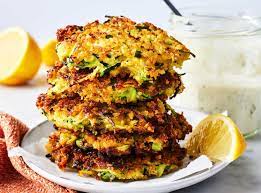
If you’re looking for a fun new way to enjoy zucchini, look no further than zucchini fritters! These crispy, golden-brown patties are a delicious way to use up excess zucchini and are a great alternative to traditional potato-based fritters.
To make zucchini fritters, start by grating your zucchinis and squeezing out any excess moisture. Then, mix the grated zucchini with eggs, flour, and your choice of seasonings, such as garlic powder, paprika, and fresh herbs.
Form the mixture into patties and pan-fry in a little bit of oil until golden brown on both sides.
Zucchini fritters are incredibly versatile and can be served as a side dish, appetizer, or even as a vegetarian main course. Top them with a dollop of sour cream or Greek yogurt and some chopped herbs for a fresh and flavorful finish.
Whether you’re a zucchini lover or just looking to try something new, zucchini fritters are definitely worth adding to your recipe arsenal. They’re easy to make, delicious, and a great way to use up all that summer zucchini.
Creative Ways to Use Zucchinis in sweet dishes
1. Zucchini bread
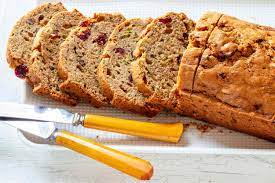
Zucchini bread is a classic way to use up excess zucchini and is a great way to enjoy this nutritious vegetable in a sweet and satisfying way. To make zucchini bread, start by grating your zucchinis and squeezing out any excess moisture.
Then, mix the grated zucchini with flour, sugar, eggs, oil, and your choice of spices, such as cinnamon, nutmeg, and vanilla. Bake the mixture in a loaf pan until golden brown and fragrant.
The result is a moist and flavorful bread that’s perfect for breakfast, dessert, or anytime in between. Top slices with a pat of butter or cream cheese for an extra indulgent treat, or enjoy on its own for a healthier option.
Zucchini bread is also incredibly versatile and can be customized to suit your tastes. Add in some chopped nuts or chocolate chips for a bit of crunch, or swap out the all-purpose flour for whole wheat or almond flour for a healthier twist.
2. Zucchini muffins
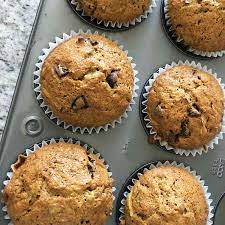
Zucchini muffins are another delicious and easy way to incorporate zucchini into your baking. These muffins are a great option for breakfast, brunch, or as a snack on the go. To make zucchini muffins, start by grating your zucchinis and squeezing out any excess moisture.
Then, mix the grated zucchini with flour, sugar, baking powder, eggs, oil, and your choice of spices, such as cinnamon or nutmeg. Divide the mixture evenly into a muffin tin and bake until golden brown.
The result is a moist and flavorful muffin that’s packed with nutrients from the zucchini. You can also add in your favorite mix-ins, such as chocolate chips, nuts, or dried fruit, to give your muffins an extra boost of flavor and texture.
Zucchini muffins are a great way to use up excess zucchini and are a healthier alternative to traditional muffins that are often loaded with sugar and calories. Plus, they’re easy to make and can be enjoyed warm or cold, making them a great option for meal prep
or on-the-go snacking.
3. Zucchini brownies

Zucchini brownies are a delicious and healthier twist on the classic dessert. These brownies are moist, fudgy, and chocolatey, with the added benefit of being packed with veggies. To make zucchini brownies, start by grating your zucchinis and squeezing out any excess moisture.
Then, mix the grated zucchini with cocoa powder, flour, sugar, eggs, oil, and your choice of spices, such as vanilla or cinnamon. Pour the mixture into a baking dish and bake until set.
The result is a decadent and indulgent brownie that’s perfect for satisfying your sweet tooth without the guilt. Zucchini adds moisture and texture to the brownies without adding extra fat or calories, making them a healthier alternative to traditional brownies.
Zucchini brownies are also incredibly easy to customize. You can add in your favorite mix-ins, such as chocolate chips, nuts, or dried fruit, to give your brownies an extra burst of flavor and texture.
Plus, you can also swap out the all-purpose flour for gluten-free or almond flour for a healthier twist.
Frequently Asked Questions
Eating bad zucchini can lead to a variety of unpleasant side effects. Depending on the level of spoilage, you may experience nausea, vomiting, abdominal pain, and diarrhea.
Eating spoiled zucchini can also cause food poisoning, which is an infection caused by consuming food or drink contaminated with bacteria or other toxins. Symptoms of food poisoning include fever, chills, headache, muscle aches, and fatigue.
In some cases, eating spoiled zucchini can be dangerous.
If the zucchini has been left out at room temperature for too long and it has become moldy or slimy, there is a risk of consuming harmful bacteria like E. coli or salmonella. These bacteria can cause serious illnesses such as kidney failure and blood infections. If you experience any severe symptoms after eating bad zucchini, it’s important to seek medical attention right away.
Absolutely! Eating soft zucchini is perfectly safe and healthy. Zucchini that has become soft is usually just overripe, but it can still be used in recipes or eaten raw. Soft zucchini can be added to soups, stews, and casseroles for a delicious and nutritious meal.
It’s also great for baking into breads and muffins. If you’re eating the zucchini raw, make sure to wash it thoroughly before slicing it up to add to salads or sandwiches. Soft zucchini may not have the same crunch as firmer varieties, but it still makes a great addition to your meals!
Zucchini should have a bright green, glossy skin on the outside. When cut open, the inside should be creamy white or yellowish in color. The texture of the flesh should be firm but tender, and it shouldn’t have any brown spots or discoloration. If the zucchini is overripe, it will become soft and mushy on the inside.
When selecting zucchini at the store, look for ones that are heavy for their size and have no blemishes or bruises on them. Avoid any zucchinis that are too soft or have a dull appearance to them; these will be past their prime.
If you plan to use your zucchini within a few days of purchase, you can store it in the refrigerator; otherwise, store it in a cool, dry place out of direct sunlight.
Yes, old zucchini can get bitter as it ages. This bitterness is caused by an increase in the concentration of cucurbitacins, which are naturally occurring compounds found in the zucchini plant. When these compounds become too concentrated, they give the zucchini a bitter flavor.
To avoid this bitterness, it’s best to use zucchini when it’s young and fresh. Look for small to medium sized zucchinis that have a bright green color and a glossy skin. Avoid any that have soft spots or are overly large, as these may be too old and bitter.
Additionally, make sure to store your zucchini properly so that it doesn’t spoil quickly. Wrap it tightly in plastic wrap and keep it in the refrigerator for up to one week.
People also ask
Why does zucchini go bad so fast?
Zucchini is a type of summer squash that is known for its short shelf life. It goes bad quickly because it is highly perishable and has a high water content. The high water content means that the zucchini can easily become over-hydrated, leading to wilting and spoilage.
Additionally, zucchini can quickly become susceptible to mold growth due to its moist environment. To prevent zucchini from going bad too quickly, it’s important to store it in a cool and dry place such as the refrigerator.
It should also be eaten within a few days of purchase for optimal freshness.
Should zucchini be spongy in the middle?
No, zucchini should not be spongy in the middle. If a zucchini is spongy when you press on it, it has likely been over-ripened and is past its prime for consumption. The ideal zucchini should be firm but slightly yielding to pressure.
It should also have smooth skin without any wrinkles or soft spots. Any zucchinis that are spongy in the middle should be discarded as they will not taste good when cooked and can potentially make you sick if consumed.
Can you cut mold off zucchini?
Yes, you can cut mold off zucchini. It’s important to do this carefully and thoroughly in order to avoid any cross-contamination of the mold spores.
First, start by cutting away any visibly moldy parts of the zucchini with a knife or kitchen scissors. Then, rinse the zucchini under cold running water to remove any remaining mold particles from the surface.
Be sure to check all sides of the zucchini for any signs of mold growth.
Finally, dry the zucchini completely with a paper towel before storing it in an airtight container in your refrigerator.
This will help prevent further mold growth on the zucchini and help keep it fresh for longer.
Do you have to peel a zucchini?
No, you do not have to peel a zucchini. In fact, it is often recommended that you leave the skin on when cooking with zucchinis. The skin adds a nice texture and flavor to dishes.
Additionally, leaving the skin on helps to retain more of the nutrients in the vegetable, such as vitamins A and C, dietary fiber, and potassium.
However, there are some recipes which may call for peeled zucchini. If this is the case, it is easy to do so using a vegetable peeler or paring knife. Simply start at one end of the tuber and work your way around until all of the skin has been removed.
Once finished, you can proceed with your recipe as directed.
Overall, peeling a zucchini is not necessary but may be desired for some recipes or personal preference.
Related articles
How to tell if sweet potatoes are bad; Ultimate guide 2023
How to tell if a Cantaloupe is ripe: Tips on picking the perfect sweet Cantaloupe 2023
Does Almond Flour go bad? And how you know it in 2023
How to preserve pumpkins to last Longer | Simple guide.
24 traditional Ukrainian foods you must try in 2023
Conclusion
In conclusion, zucchinis are a delicious and versatile vegetable that can add flavor, nutrition, and texture to any meal. However, they are also prone to spoilage if not handled and stored properly.
In this post, we’ve discussed the telltale signs of spoiled zucchinis, including changes in physical appearance, smell, touch, and taste. We’ve also covered the importance of proper storage to prolong the shelf life of zucchinis and keep them fresh and safe to eat.
By following the tips outlined in this post, you can enjoy the many benefits of zucchinis while keeping yourself and your loved ones safe and healthy.

Leave a Reply
You must be logged in to post a comment.